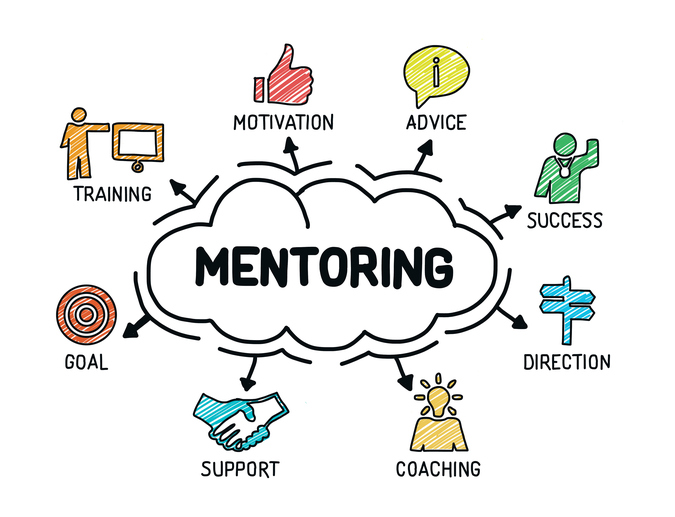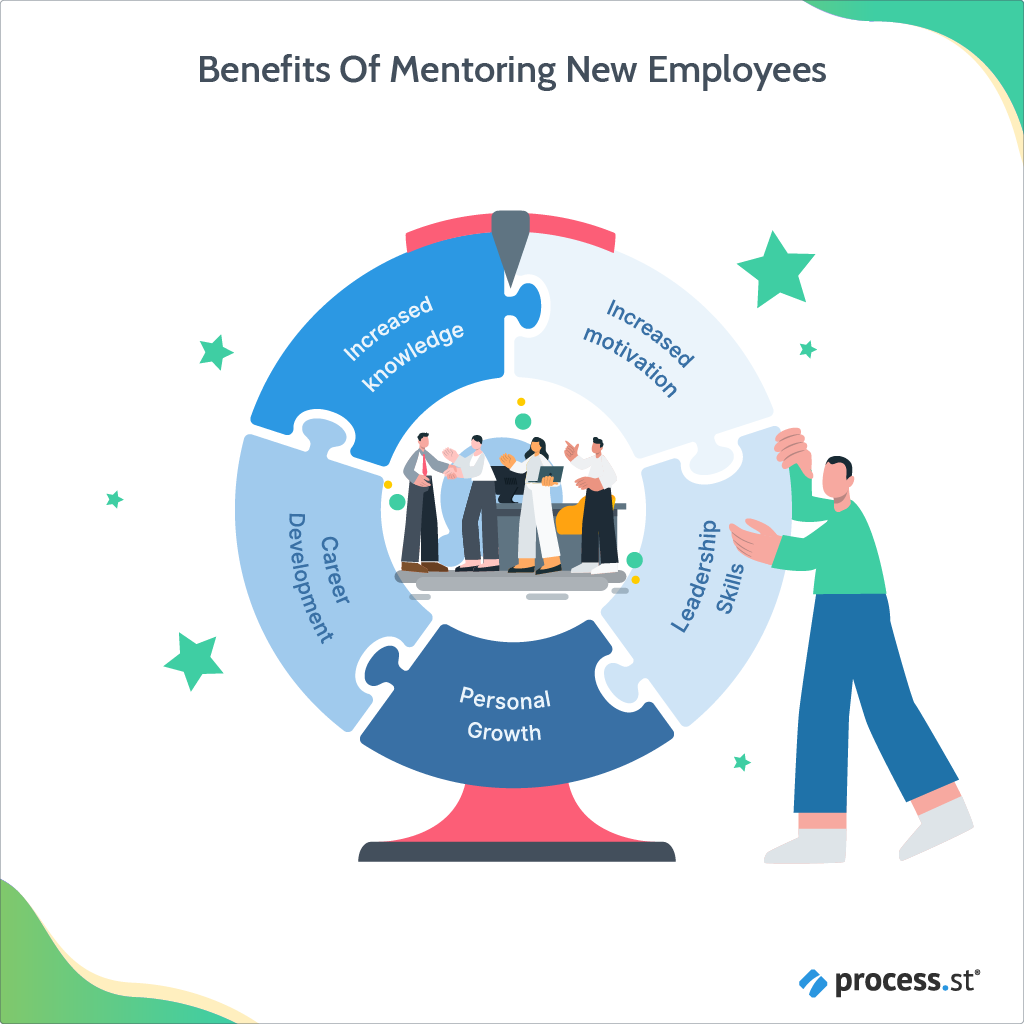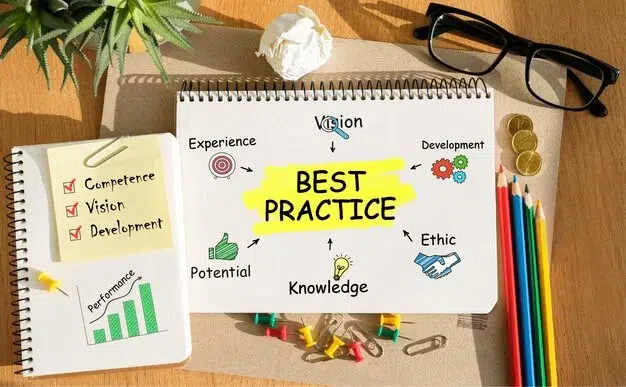Mentoring is a dynamic process where a more experienced or knowledgeable individual (the mentor) guides a less experienced or knowledgeable person (the mentee). The aim is to foster professional and sometimes personal development. The structure of mentoring can vary widely, depending on the goals of the program and the needs of the participants:
1. Formal Mentoring
The formal mentoring programs are highly structured with defined goals, timelines, and matched relationships usually facilitated by the organization. For instance, corporations like IBM have long-standing formal mentoring programs where mentors and mentees are carefully paired based on career goals and expertise areas. These programs often include training sessions for mentors and provide continuous support throughout the mentoring relationship.
2. Informal Mentoring
Informal mentoring programs are less structured, these relationships develop naturally and organically, often without formal objectives or institutional oversight. An example of informal mentoring could be a seasoned employee at a tech startup who informally advises newer employees. The advice could range from coding tips to navigating the company culture.
3. Peer Mentoring
It occurs between individuals at similar career or age levels but with different areas of strength. This reciprocal mentoring style can be particularly effective in environments where collaboration and knowledge sharing are encouraged. For example, at Adobe, peer mentoring circles are formed among employees to share skills and experiences that help each other grow professionally.
Each type of mentoring serves unique purposes and can be strategically deployed to meet specific organizational goals or to address individual developmental needs.

Benefits for Employees
The benefits of mentoring programs and mentorship for employees are as follows:
Skill Development
Mentoring provides a unique opportunity for personal and professional growth that is difficult to achieve through traditional training programs. For example, employees engaged in Google’s mentoring program reported significant improvements in technical skills and project management abilities due to their mentors’ real-time feedback and hands-on guidance. Mentees can tackle complex projects under the guidance of seasoned professionals, gaining confidence and capabilities more rapidly than they might in isolation.
Career Advancement
Mentoring opens doors to career advancement opportunities by connecting mentees with influential leaders within the organization. This relationship provides mentees with insider knowledge on navigating career paths effectively. At Sun Microsystems, for instance, mentees who participated in their career mentoring program were 5 times more likely to advance in pay grades compared to non-participants, showcasing the direct impact of mentoring on career progression.
Increased Engagement
Being part of a mentoring program can significantly enhance an employee’s commitment to an organization. Employees who feel supported by mentors often experience a greater sense of belonging and loyalty to the company. Research by Gallup found that 97% of employees at companies that support well-structured mentoring programs are valuable.

Practical Guidance and Resource Links:
For organizations looking to implement or revamp their mentoring programs, resources like MentorcliQ provide comprehensive tools for managing all aspects of mentoring relationships, from pairing mentors and mentees based on compatible goals to tracking the progress of the mentoring relationship. Additionally, Chronus offers software solutions that automate many administrative tasks associated with running a mentoring program, allowing organizations to focus more on the qualitative aspects of mentor-mentee relationships.
Organizations can enhance employee skills, foster career development, and increase overall job satisfaction by understanding the various mentoring programs and leveraging their unique benefits. This supports individual career trajectories and propels organizational success through a more motivated and competent workforce.
Benefits for Employers
By investing in mentoring, employers can build a more skilled, loyal, and engaged workforce. Here are some key benefits for employers:
Improved Employee Retention
Mentoring programs significantly enhance employee retention rates. According to a Harvard Business Review, employees engaged in mentoring are 20% more likely to stay with their company. This increased retention stems from the more profound job satisfaction and organizational commitment that mentoring nurtures, as employees feel valued and supported in their career paths.
Knowledge Transfer
Mentoring is key in effectively transferring critical organizational knowledge. Senior employees impart invaluable wisdom and insights to newer employees, ensuring that vital technical knowledge and company practices are preserved. This is particularly crucial in engineering and tech industries, where historical knowledge can significantly impact future project success and innovation.
Leadership Development
Mentoring accelerates leadership development by giving mentees direct access to experienced leaders. This exposure is instrumental in preparing the next generation of leaders who effectively understand the nuances of managing teams and projects. For instance, companies like General Electric have leveraged mentoring to prepare junior employees for senior roles, significantly smoothing leadership transitions.
:max_bytes(150000):strip_icc()/types-of-employee-benefits-and-perks-2060433-Final-edit-60cedb43c4014fdeb51aa3cd3c25f027.jpg)
Implementing a Mentoring Program
A mentorship program can be employed by considering the following factors:
Defining Objectives and Scope
The first step in launching a mentoring program is clearly defining its objectives. Whether focusing on enhancing technical skills, leadership development, or promoting diversity, having clear goals helps tailor the program’s structure to meet these aims effectively. For example, if the goal is diversity promotion, the program should be designed to connect mentees from diverse backgrounds with mentors who can guide navigating the unique challenges they may face.
Matching Mentors and Mentees Effectively
The success of a mentoring program often hinges on the compatibility of mentor-mentee pairs. 9Thools like Mentorloop can facilitate effective matches by analyzing profiles and preferences to suggest the best pairs. This matching process considers professional skills, career goals, and personal interests to ensure a productive and enriching relationship.
Practical Guidance and Examples
- Setting Objectives: Begin with surveys or focus groups within your organization to identify the areas where mentoring could be most beneficial. This feedback can inform the specific objectives of your mentoring program.
- Effective Matching: Enhance the matching process with regular review meetings where mentors and mentees can provide feedback on the relationship’s effectiveness. Adjust pairings as necessary to maximize the program’s benefits.
- Resource Provision: Create a dedicated portal on your company intranet where mentors and mentees can access resources, schedule meetings, and find support for any challenges.
- Harvard Business Review – How to Start a Mentoring Program: Offers strategic insights and case studies on implementing successful mentoring programs.
By thoroughly understanding the benefits of mentoring and carefully planning the implementation of a mentoring program, employers can enhance employee satisfaction, facilitate effective knowledge transfer, and develop future leaders. This strategic approach improves individual career paths and bolsters the organization’s overall competitive edge.
Best Practices for Effective Mentoring Programs
The best practices for effective mentoring programs are:
1. Establishing Clear Expectations and Goals
To ensure the success of a mentoring program, both mentors and mentees must have a shared understanding of the program’s objectives. Goals should be SMART: Specific, Measurable, Achievable, Relevant, and Time-bound. For example, a mentee’s goal could be to lead a project team within the next six months, which helps them build leadership skills. Tools like Asana can help track these objectives by allowing mentors and mentees to set tasks and monitor progress together.
2. Regular Check-ins and Feedback Mechanisms
Consistent and structured check-ins are vital to maintain the momentum of the mentoring relationship. Using digital tools like Google Forms or SurveyMonkey to collect regular feedback from mentors and mentees can provide insights into what is working and needs adjustment. This could involve monthly feedback forms that ask about the value of the relationship, the relevance of discussed content, and suggestions for future discussions.
3. Encouraging Open Communication and Trust
Creating an environment that fosters open communication and trust involves ensuring that both parties feel comfortable sharing their thoughts without fear of judgment. This could be facilitated by establishing ground rules in the initial meetings that emphasize confidentiality, respect, and mutual support. Tools like Slack channels dedicated to mentoring can help maintain ongoing communication in a less formal setting, enhancing the relationship.

Measuring Success in Mentoring Programs
The success can be measured in mentoring programs by following these:
Tracking Progress and Outcomes
It’s essential to monitor the mentoring program’s effectiveness by tracking qualitative and quantitative data. Metrics might include the number of mentees who achieve their set goals, receive promotions, or take on significant projects due to the mentoring. Utilizing a platform like Tableau can help visually track these successes and identify trends over time, making it easier to report ROI to stakeholders.
Adjusting the Program Based on Feedback
Feedback should be a goldmine of information for improving the mentoring process. Regularly scheduled program reviews, using insights gathered from feedback tools, should inform any necessary adjustments. This might mean re-pairing mentors and mentees, introducing new learning materials, or revising the program’s scope to meet current organizational needs better.
Challenges and Solutions in Mentoring
The challenges and their solutions in mentoring are:
1. Time Constraints
Allocating dedicated time for mentoring within working hours can address the common challenge of finding time for these activities. This can be implemented by designating specific weekly hours as ‘mentoring hours, ‘ similar to office hours in academia. These hours can also be tracked using time management software like Toggl.
2. Mismatched Pairs
If a mentoring pair is not working effectively, it’s crucial to intervene early based on feedback. Allowing mentees and mentors to request a re-match can help prevent any negative impact on the individuals involved and the program’s overall integrity. Regular assessment meetings facilitate open discussions about these dynamics.
3. Maintaining Momentum
Introduce new elements such as guest speakers, workshops, or group mentoring sessions to keep the mentoring program engaging over time. Publicly recognizing milestones, such as during company meetings or through internal newsletters, can also celebrate progress and keep participants motivated.
Case Studies
Google Program: Google’s “Buddy Program“ pairs new hires with experienced Googlers, helping them quickly assimilate company culture and build internal networks. This speeds up onboarding and deeply integrates new employees into Google’s community.
General Electric’s Reverse Mentoring Program: This innovative program taps into the fresh perspectives of younger employees who mentor senior executives on new technologies and trends. It highlights the bidirectional benefits of mentoring, where both parties have valuable insights to offer, reinforcing the program’s value across the corporate hierarchy.
Conclusion
Mentoring is more than just another HR initiative in professional development. It is a fundamental aspect of a learning culture that supports continuous development, fosters significant professional relationships, and promotes organizational knowledge and leadership continuity. By embracing and actively promoting workplace mentoring programs with Network Mountain, companies invest in a brighter future for their employees and themselves. Start small, measure your outcomes, and scale based on what works. The benefits, such as improved mentorship relationships and enhanced communication skills, may exceed expectations.
